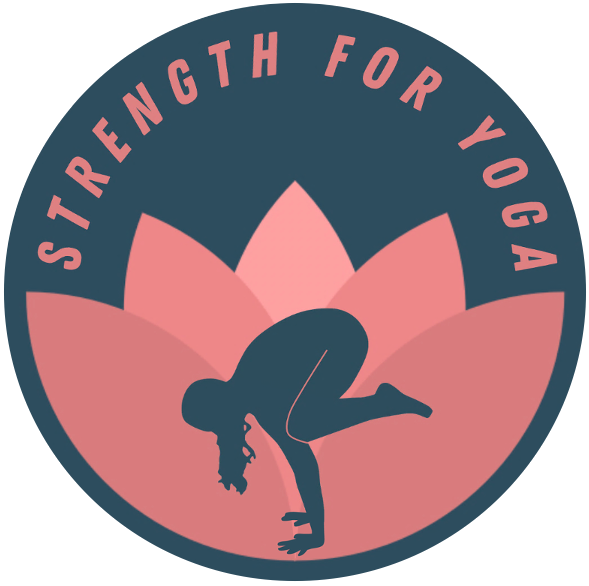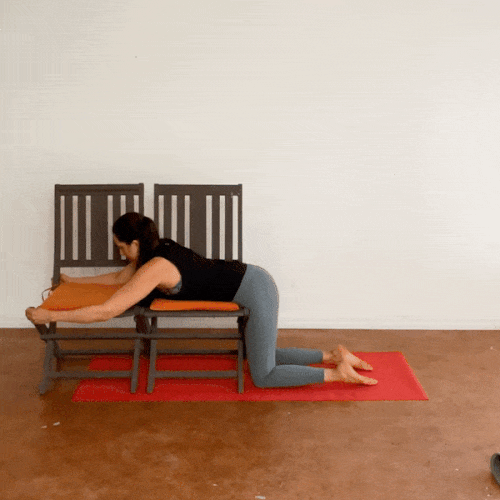Are You Strong Where You Need to Be?
What angles and positions do we strengthen in yoga?
As seasoned yogis, we tend to build strength in certain positions and directions. (Chaturanga arms, anyone?!)
The strength we build on the mat is wonderful. But the truth is, the strength-building possibilities in yoga are limited by how we can contort our bodies against gravity in the context of a mat-based practice.
Let's take a look at shalabhasana (locust pose) as an example:
Shalabhasana is a great option within our yoga asana lexicon for targeting our back body.
We start lying face down on our yoga mat and then we use our posterior chain muscles (e.g., spinal erectors, glutes, and hamstrings) to lift our body up away from the floor.
However, have you ever noticed that shalabhasana moves us through a relatively small range of motion?
If we look at the hip joint, we start with our hips in a neutral position and from there, we lift our thighs up into full hip extension. The total movement at the hip joint is generally just a few degrees of motion.
So while shalabhasana feels great and does build strength, it only does so in one specific position (full hip extension).
Meanwhile, in our daily lives it’s essential that we have back body strength through a *full range of motion*.
For example, standing up from a chair requires hip extension strength through a 90° arc of motion, not just at the top of the arc (when we’re already standing!).
So if we're interested in preparing ourselves to be strong in our real-life movements, shalabhasana can be helpful, but it isn't enough on its own.
So what's a yogi to do for fuller range of motion strengthening?
Enter... the reverse hyperextension exercise!
This exercise, which we sometimes include in our Remote Group Training program, is a perfect solution to this quandary!
In a reverse hyperextension, we're in a similar face-down position to shalabhasana, and we're targeting the same back body muscles as shalabhasana (at least with regard to the lower body).
Because we've elevated our torso, we're positioned such that our hips can flex and extend against gravity through that larger 90° arc of motion that we use when we stand up from a chair.
We've shown the reverse hyperextension with a two-chair setup, but you can alternatively use
an exercise bench
a sofa
a coffee table
an ottoman
etc.
More insider tips:
You can even elevate your torso higher still by adding a physioball on top of your chairs, bench, etc. The physioball variation allows us to keep our knees straight throughout the entire movement, which is even more similar to our leg position in shalabhasana!
You could also add ankle weights (to any of the setups) to increase the load.
As you can see, while yoga's shalabhasana strengthens our back body in one specific joint angle, the strength training world's reverse hyperextension strengthens our back body through a more full range of motion.
When we strengthen through a full range of motion, it better prepares us to be strong for the sundry positions and forces we may encounter in the real world. 🌏
. . .
And there you have it: one reason why yoga and a structured strength program are such ideal, complementary movement practices! A strength program can be perfect for filling in the gaps left behind by a mat-based yoga practice.
You Might Also Like…







